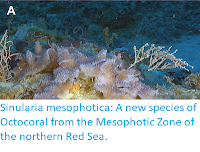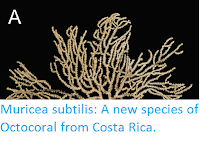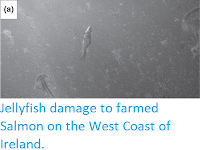In February-April 2016 elevated surface temperates above the Great Barrier Reef caused one of the most severe Coral bleaching events ever recorded, with over 60% of the Corals losing their symbiotic Algae. This has been the subject of numerous studies, though the vast majority of these have concentrated on the Corals themselves rather than other inhabitants of the reef system.
In a paper published in the journal Coral Reefs on 4 April 2017, Anna Scott of the National Marine Science Centre at Southern Cross University and Andrew Hoey of the ARC Centre of Excellence for Coral Reef Studies at James Cook University, describe the effect of the bleaching event on the Fish-hosting Anemones and their attendant Anemonefish in the lagoon of Lizard Island on following the 2016 Great Barrier Reef bleaching event.
Scott and Hoey visited the lagoon in 10-15 April 2017, and recorded the Fish-hosting Anemones present, then retured on 17-22 October to re-examine the Anemones again.
The most abundant Fish-hosting Anemones in the lagoon belonged to the Bubble-tip Anemone, Entacmaea quadricolor, with ten colonial clumps and two individuals. Also present were single individuals of the Leather Anemone, Heteractis cripsa, and the Magnificent Sea Anemone, Heteractis magnifica. All of these Anemones were bleached. Living within these Anemones were nineteen Fire Clownfish, Amphiprion melanopus, three Orange Clownfish, Amphiprion percula, and two Spine-Cheeked Anemonefish, Premnas biaculeatus. Also present were three Mertens' Carpet Sea Anemones, Stichodactyla mertensii, which was not bleached and which were host to nine Clark's Anemonefish, Amphiprion clarkii.
A bleached Magnificent Sea Anemone, Heteractis magnifica., with attendant Orange Clownfish, Amphiprion percula, in April 2017. Scott & Hoey (2017).
By October the the Magnificent Sea Anemone, had completely recovered, but the Leather Anemone, had vanished, as had one of the solitary Bubble-tip Anemones and six of the colonies; the remaining colonies showed signs of having began to recover, but the remaining solitary Bubble-tip Anemone remained bleached. Most of the Fish remained, but the number of Fire Clownfish had fallen by nine (almost half), presumably in reaction to the loss of habitat.
A recovering Magnificent Sea Anemone, Heteractis magnifica., with attendant Orange Clownfish, Amphiprion percula, in October 2017. Scott & Hoey (2017).
See also...
Follow Sciency Thoughts on Facebook.








